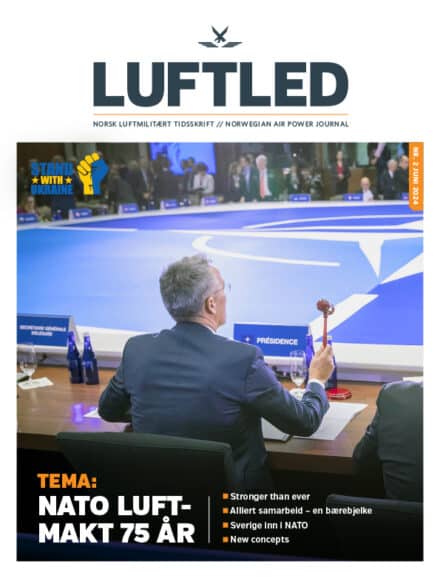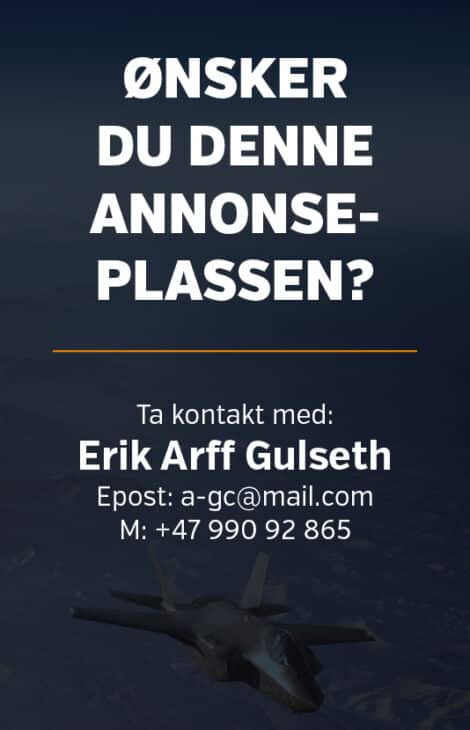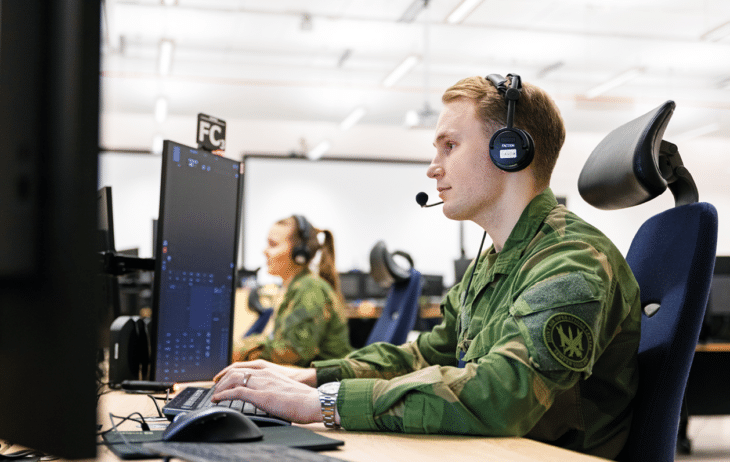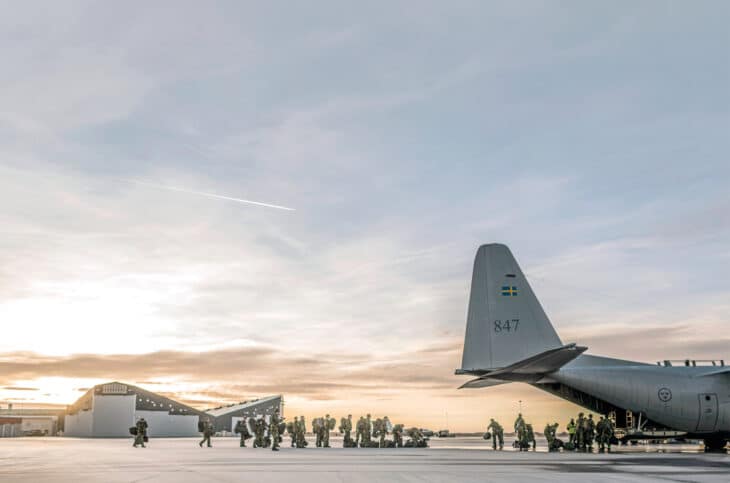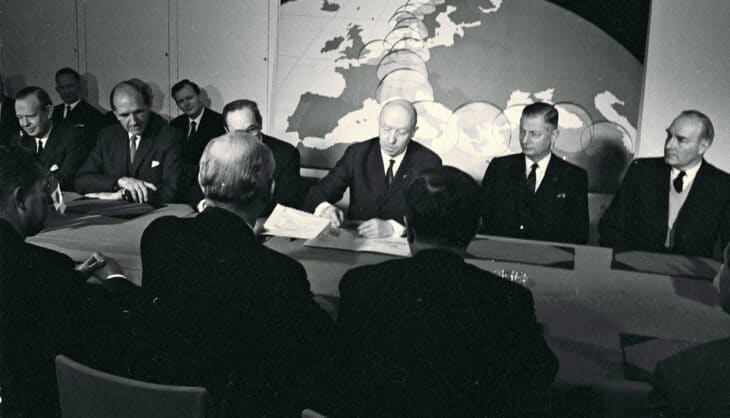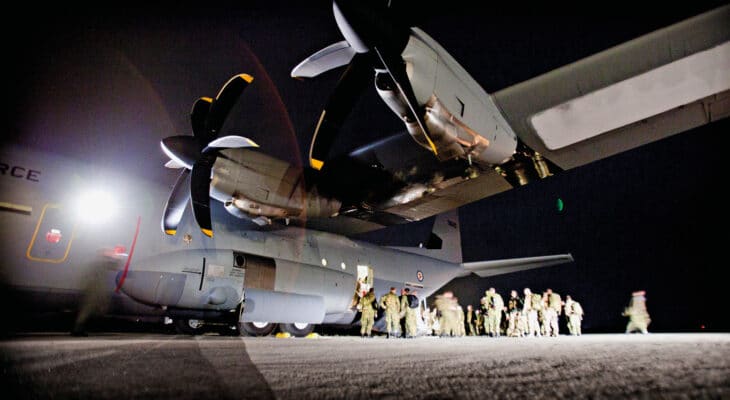Evolving Norway’s Role in the NATO Alliance
In 2020 the Norwegian Ministry of Defence asked RAND, a non-profit research institute, to produce a study on Allied perspectives of the options facing Norway. How does the new long-term defence plan meet the recommendations from the RAND study from 2020?
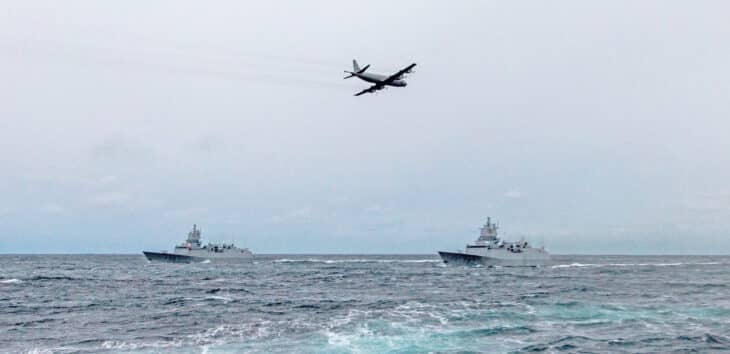
At the time, our report outlined five strategic priorities: investing in national defence capabilities, expanding Norway’s capacity for receiving Allied reinforcement, exploring ways to hold adversaries at risk at long range, enhancing societal resilience, and solidifying contributions from NATO and partners. How is the new long-term plan compared to RAND’s 2020 advice?
The transformation of Nordic defence has made global headlines since Russia’s full-scale invasion of Ukraine in February 2022. While Sweden and Finland’s decision to abandon their long traditions of military non-alignment and join NATO has dominated attention, Norway also finds its geostrategic position and its role in the Atlantic Alliance undergoing profound change.
For decades, Norway has sought to play a dual role: defending and deterring against Russian aggression on NATO’s northern flank, while simultaneously seeking to reassure Russia and maintain productive bilateral relations. While the illegal Russian annexation of Crimea in 2014 and the simmering conflict in the Donbas had strained this relationship, it took the events of February 2022 to trigger a radical reassessment of the threat environment facing Norway’s defence.
Norway has since provided military aid to Ukraine and found itself under pressure to follow key NATO allies – such as the UK, Germany, Poland, or other Nordic and Baltic states – in urgently increasing military expenditure to strengthen the Norwegian Armed Forces, increase defence production, and backfill the arms and equipment donated to Kyiv.
In April 2024, the Norwegian government unveiled the latest iteration of its Long-Term Plan (LTP) on Defence. This proposed a historic increase in defence spending, allocating a total of NOK 1,624 billion through to 2036 and a near-doubling of annual budgets compared to current levels.
The government also outlined its intentions to procure new frigates, submarines, and other vessels for the navy; to bolster Norway’s air defences; to expand the army from one to three brigades; to grow the Home Guard to 45,000 soldiers; and to improve situational awareness through investment in intelligence-gathering capabilities such as uncrewed systems and satellites. There was also a pledge to implement more agile, streamlined acquisition processes so that new equipment, technology, and infrastructure could be procured faster.
This new version of the Long-Term Plan represents a major departure from the past. In 2020, when the government was preparing its previous plan, the Ministry of Defence asked RAND, a non-profit research institute, to produce a study on Allied perspectives of the options facing Norway. At the time, our report outlined five strategic priorities: investing in national defence capabilities, expanding Norway’s capacity for receiving Allied reinforcement, exploring ways to hold adversaries at risk at long range, enhancing societal resilience, and solidifying contributions from NATO and partners.
Since then, the threats facing Europe have only worsened. This makes it even more pressing that Norway addresses these strategic priorities, both to bolster its own defence and to enhance the deterrence posture of NATO on its northern flank. Norway’s role in NATO is changing in 2024, given the changing security situation in the region, as well as the impact of Sweden and Finland joining the Alliance.
An Allied Perspective on Norway’s Evolving Role in NATO
Given the commitments made in the new LTP, as well as the accession of its neighbours to NATO, Norway can contribute to the future of the Alliance in several important ways:
- as a watchful guardian on the northern flank, emphasising the need for situational awareness in the maritime and air domains.
- as a steadfast supporter of Sweden and Finland as possible frontline nations (alongside Norway’s own direct land border with Russia) in any future conflict with Russia, emphasising the importance of strategic depth, logistics, and sustainment.
- as a contributor of niche technical expertise and industrial capacity to the development of innovative new capabilities for Norway and its allies.
Guardian of the Northern Flank
Because of its geography, Norway’s security has always been intimately tied to control of the North and Norwegian Seas, and of the associated airspace. A history of occupation and liberation places additional importance on securing wider lines of communications, such as the sea-lanes across the Atlantic which are arterial to the NATO Alliance.
Since the days of the Cold War, Russian plans for any future war with NATO have recognised the need to interdict the flow of American and Canadian troops and materiel across the Atlantic. Given its strategic position on NATO’s northern flank, Norway has an essential role to play alongside US and British forces in securing the Greenland-Iceland-UK (GUIK) and Bear (Svalbard-North Cape) gaps – preventing Russia from projecting naval and air power into the North Atlantic.
Norway also needs to monitor growing hybrid threats to the country’s territorial waters and exclusive economic zone. This includes new threats to the subsea infrastructure essential to Norway’s economy and modern way of life, such as underwater data cables, electricity interconnectors, and oil and gas pipelines. Such infrastructure is increasingly vulnerable, given Russia’s advanced undersea warfare capabilities, as well as the proliferation of uncrewed underwater systems, smart mines, and other technologies. There are also ongoing hybrid threats to Norway’s remote northern territories, including those arising from Russian activities around Finnmark, such as GPS jamming and airspace incursions, or provocations around the Svalbard archipelago.
Amidst growing militarisation of the polar region, and with melting sea ice making Arctic waters and the Northern Sea Route increasingly navigable in summer months, the Norwegian Armed Forces also face new requirements for operations in extreme cold conditions. Crucially, even if the risks of a military conflict starting in the High North remain comparatively low, the region’s strategic significance as Russia’s defensive bastion and the home of its nuclear-armed submarines and North Sea Fleet means it would quickly be pulled into any conflict sparked elsewhere.
Norway can contribute to the future of the Alliance as a watchful guardian on the northern flank, emphasising the need for situational awareness in the maritime and air domains
Facing growing threats from the North, Norway thus represents the first line of defence for NATO. Here, then, the planned acquisition of new submarines, anti-submarine warfare frigates, mine-countermeasure capabilities, and uncrewed systems all align with this role. Such enhanced capabilities will not only boost Norway’s own defence, but also help the U.S., UK and other NATO navies ensure a credible deterrent in the North Atlantic, North Sea, Norwegian Sea, and Arctic.
The 2024 LTP also increases Norway’s capacity for intelligence gathering, including through space-based capabilities. This offers increased reach, coverage, and remote monitoring of some of Norway’s less accessible territory and waters. It also reduces reliance on U.S. capabilities at a time when the American military’s attention is increasingly pulled toward the Indo-Pacific.
While the latest LTP directs much of the new spending towards the navy and army, this partly reflects the fact that the Norwegian Air Force was the main beneficiary of previous iterations of the plan. Norway is already bringing online its new F-35 stealth fighter and P-8 Poseidon maritime patrol aircraft, offering a major boost to the country’s intelligence gathering and strike capabilities. The 2024 LTP’s commitment to invest more in uncrewed systems like long-range aerial drones offers a chance to build on these recent acquisitions by exploiting the benefits of new technologies – including the increased mass from lower-cost drones. However, few Western militaries have yet incorporated these new technologies fully into their arsenals.
At the same time, Sweden and Finland have joined NATO and all four Nordic countries have agreed to integrate their air forces more closely. This offers new opportunities to enhance the defence of the North Calotte region especially and of the combined Nordic airspaces more broadly.
Finland is soon acquiring the F-35A to replace its ageing F/A-18 fighters. There are also new efficiencies to be derived from three of the four Nordic air forces operating and maintaining the same aircraft type. Conversely, the need to integrate the F-35A with Sweden’s JAS-39 Gripen fleet also offers Norway a chance to be at the forefront of shaping NATO’s wider efforts to get the most out of fourth and fifth generation aircraft.
Steadfast Supporter
With comparatively small armed forces, and a large territory to defend, Norway’s defence also hinges on receiving and supporting Allied reinforcements in a crisis. This was already recognised as a key priority in the previous LTP and in RAND’s 2020 study for the Norwegian ministry of defence. Both emphasised revitalising Norway’s capacity for host nation support. This includes investment in infrastructure such as airbases, ports, and secure locations for pre-positioned U.S. military equipment – much of which was overlooked in the decades following the Cold War.
Sweden and Finland joining NATO means that the military geography of the Nordic region has shifted. While reception, staging and onward integration of Allied reinforcements is still vital to Norwegian defence and security, it is likely that any future conflict with Russia would involve direct attacks by Russian forces on Norway’s neighbours, requiring Norway to help NATO project power eastward. Even Norway’s own border with Russia could be contested, in which case the trilateral cooperation with Sweden and Finland will provide support.
In particular, Finland’s new membership of NATO has greatly increased the Alliance’s land border with Russia. It has also placed the strategically important Russian military bases and lines of communication on the Kola Peninsula within long-range fires from Finnish territory. Similarly, the Swedish island of Gotland offers a vital launchpad for operations in the Baltic Sea. In both cases, Russia would want to push back NATO forces further from its own territory in any future conflict, meaning the newest entrants into the Atlantic Alliance are likely to be priority targets for air and missile strikes, and possibly for land incursions too.
Given its strategic position on NATO’s northern flank, Norway has an essential role to play alongside US and British forces in securing the Greenland-Iceland-UK (GUIK) and Bear (Svalbard-North Cape) gaps – preventing Russia from projecting naval and air power into the North Atlantic
Finland is now responsible for much of NATO’s frontline in the north of Europe, and Sweden is emerging as a key logistical hub for moving troops and supplies to Finland and across to the Baltic States. Norway will be key to strategic depth and enabling NATO activities in the wider region.
As Sweden is starting to think about what NATO membership means, it looks to both east and west, to aid in defence of both Finnmark and Finland. Common command and control links would enable long-range precision fires to be directed from Sweden and Finland, munitions to be interchangeable, and newly acquired ISTAR drones to have the capability to share information with allies.
Here, the establishment of a new Brigade South, and the acquisition of long-range air defence systems, helps to secure Norwegian airbases and ports for importing troops and equipment and pushing them east. The expanded Home Guard can provide further protection to logistic and staging infrastructure. Collaboration and mutual exercises between Swedish and Norwegian forces can facilitate smooth troop transport across the borders when required. Expanding and mechanising the Army will similarly provide valuable Norwegian reinforcements to Sweden and Finland if needed, while investment in long-range fires and new ISTAR capabilities will increase Norway’s ability to provide rear-echelon fire support.
The scale of the challenge may not be appreciated by all, however. For Norway, upgrading the infrastructure needed to support staging and receiving from both east and west, and the flow of assets south to north, will be costly and take many years to implement, not least given the difficult terrain in rural areas. To maximise the coordination of activities in the Nordic countries, NATO should continue to investigate the most efficient command and control arrangements for the region. It must be conscious of the current division of Norway, Sweden, and Finland between two separate Joint Forces Commands in Brunssum and Norfolk, VA. This appears suboptimal.
Crucially, too, the war in Ukraine has shown that future conflicts may not be the swift (if bloody) affairs long envisaged by many defence planners in NATO countries. Rather, Norway must be ready for a protracted conflict, possibly with reduced American support. This entails a growing need for capabilities to conduct sustained combat operations, including in harsh and remote environments where Norway already has experience, but not on the scale that would be needed in future. An increase in army resources for Finnmark is a positive first step, but further actions could be required to sustain and supply these resources long-term. There is similarly a need to ensure that Norway has sufficient underlying defence industrial capacity to surge production in times of crisis, as well as to revitalise the Cold War-era Total Defence concept to bolster the resilience of Norway’s society, economy, and civilian population, including against cyberthreats.
Threat-Driven Capability Development
To anchor and strengthen the NATO roles outlined above, Norway should also focus on accelerating the development and acquisition of innovative new capabilities for its military, as well as bolstering the technology, industrial and skills bases needed to deliver them.
Even if it is impossible to foresee what the threat will look like in 10 to 15 years from now, some trends based on current and past behaviours and stated ambitions can be observed and should be considered. Hybrid threats to critical infrastructure are bound to persist, as well as subthreshold threats to target national and societal resilience. Observations from the battlefields of Ukraine show
- increasing duels between uncrewed aerial systems and their countermeasures;
- the deadly and asymmetric threats posed by uncrewed surface and underwater systems to traditional naval platforms;
- the vital importance of electronic warfare and countermeasures, long overlooked by most Western militaries;
- the increasing ease of hacking or jamming satellite services;
- the impact of long-range fires, combined with pervasive ISTAR capabilities and AI-enhanced command and control tools, in forcing military units to disperse, dig in, and conceal themselves to survive.
But what new threats will arise as such circumstances become the norm? Through Nordic cooperation and interoperability, current capability gaps can begin to close and new ones can be tackled together. Norway can lead the way in assisting the new members, Sweden and Finland, in finding their places in the Alliance. In turn, those new members, long held as benchmarks of societal resilience in Europe, may have useful lessons for Norway and NATO.
Norway should also work with these neighbours and other NATO Allies to make the most of the new Defence Innovation Accelerator for the North Atlantic and Innovation Fund, building on its own niche areas of scientific and technical expertise. It should accelerate procurement processes to bring new ideas into service at the speed of relevance. The country has welcome strengths in areas such as missiles, explosives, and munitions, as well as autonomous systems and underwater capabilities. This also means investing in expanding Norwegian defence industrial capacity in line with NATO’s Defence Production Action Plan; and engaging as a third party with related EU initiatives such as the Permanent Structured Cooperation, the European Defence Fund, or the new European Defence Industrial Strategy.
Now is the time to deliver on ambitions
While the Russian annexation of Crimea and attacks on the Donbas in 2014 sounded alarm bells across Europe, it has taken the full-scale invasion of Ukraine in February 2022 to rouse Nordic countries to the scale of the threats facing them and the wider transatlantic community. With its Swedish and Finnish neighbours now full members of NATO – something unimaginable only a few years ago – there is an opportunity for Norway to reimagine its own role within the Alliance.
This entails both enhanced investment in the sorts of national military capabilities and infrastructure that Norway has long needed to defend and deter against possible Russian aggression on NATO’s northern flank, and new levels of integration with Sweden and Finland to maximise the efficiency of collective NATO defence of the wider Nordic-Baltic region.
The 2024 Long-Term Plan provides welcome recognition of the need to increase investment, to accelerate the fielding of new capabilities and expand the size of the armed forces. As such, it builds on the strategic priorities previously identified in earlier LTPs and RAND’s research for the Norwegian ministry of defence, providing a solid foundation for the future.
At the same time, the scale, complexity, and urgency of the challenges facing Norwegian – and wider European – defence and security must not be underestimated. With potential changes to U.S. presidency, with American military attention increasingly pulled towards the Indo-Pacific and Middle East, and with the outcomes of Russia’s ongoing war in Ukraine uncertain, Norway must be prepared to go further and faster if needed. Allies will welcome the increased ambition for defence in Norway’s latest LTP. The key now is to deliver on these aspirations – and quickly.
